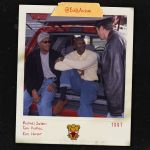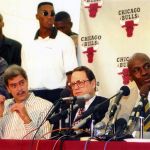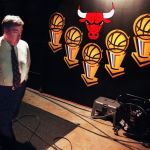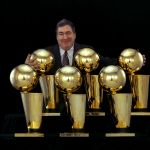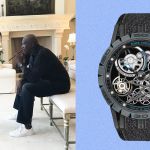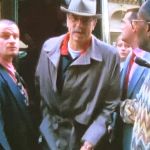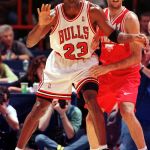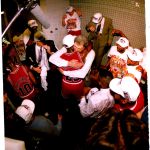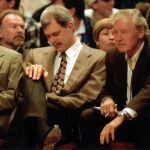
5 things the first episodes of "The Last Dance" told us
The two parts focused on Jordan, Pippen and the figure of Jerry Krause
April 21st, 2020

FASHION LIKE A ROCK BAND
THE LEADER AND THE GUIDE
Charismatic, technical and emotional leadership was compressed in one man. Not that the others had no responsibility, but Jordan was the focal point of everything. Yet the real figure who managed to transform a group that was enough to venerate Michael into a true and almost unbeatable basketball team is Phil Jackson, the catalyst of everything in that legendary team. Between Jordan and Jackson - and we are sure that the matter will be explored later in the series - it was not love at first sight, but Jackson's approach (perfectly enclosed in the phrase "I don't want to speculate on that") led Jordan to another dimension. And if your leader changes his face, your team changes his face. The Zen Master who is in Jackson is beautifully described in "Eleven Rings", a book to which "The Last Dance" owes a lot.
Jackson and Jordan, Jordan and Jackson, with the culture of supporting actors that takes one step more than the others, with the ideas of Tex Winter and with the inspiration of a team assembled from what is in all respects painted as a monster or rather Jerry Krause. Open icon on the Bulls GM, because it will come in handy.
THE ARCHITECT AND THE WRECKER
Exorcised and portrayed as a demon in some ways, Bulls GM Jerry Krause appears to be the only loser of the first two episodes. He was at the same time the architect and wrecker of the fairytale and dynasty of Chicago, always at the center of criticism, motivated or not. Ja Morant has compared him to Mr. Swackhammer, the "fat man" who in Space Jam dares to challenge MJ. In these first two episodes, the General Manager's work is put in a bad light, as if his goal was to end those magnificent Bulls. The truth is as always in the middle: on the one hand the exasperated ways, the now cracked relations between the front office and the team, the often strong statements and the absolutely wrong ways; on the other the desire to do the good of the franchise, not selling off its best players and according to market rules that are now part of NBA everyday life. The jokes in public of Jordan & Co up to the brutal outburst of Pippen tell how difficult coexistence was in the 1997-98 season. But has Krause always been on the wrong side?
The downside is Jerry Reinsdorf, owner of the Bulls since March 13, 1985. The figure of the owner as perhaps we had never seen her, more similar to that of a father who loves his children but who shows intransigence when he has to. Just think of the time of the signing of the 18 million Scottie Pippen contract for 7 years in 1997 when he clearly said "Don't sign this contract, you are selling yourself out, it is too long a contract". Probably no owner today would worry about a win-win contract for his company and to the detriment of a player. When it is time to go back, however, there is no more time. Like true family fathers, the warning comes only once. Again, the Bulls were unique.
MATTER OF DETAILS
The series impressed everyone with the quality of the montage seen so far, on the smoothness of the story, but there are some details that represent the plus of these two episodes. Details that can be spotted in the form of expressions: the phrase that James Jordan used to stimulate his son Michael ("If you want Michael to do his best, tell him that he's incapable") or Mike's explanation of how anger - and not the simple obsession, an important distinction - allowed him to shake his teammates without Scottie in the gym or on the pitch. Details that can be identified in the form of episodes: the face of the child who receives the autograph of his idol, the unsuccessful attempt of a steward who sees himself rejected by Michael but by one of his bodyguards, the slap that Oakley trims at Pippen or the sketch of the embrace between Harper and Burrell repudiated with superiority by MJ.
STORIES IN THE STORY
The intersection of personal stories could be the leitmotiv of the series, going deep into the lives of the individual players who made those Chicago Bulls immortal before tackling the last dance. Jordan's images in North Carolina are not new and the tales of the protagonists - among them coach Roy Williams stands out - add only small details to an already known story. Different fate for the images of Scottie Pippen, a boy who always put the large family first and then everything else. Without forgetting the rise to power of Jerry Krause, who starts from the Major League to play a first-rate role in a run-down NBA. In short, stories that retrace and retrace from here to the end, crossing each other over and over again, to give life to what everyone, absolutely everyone, knows as The Last Dance.







